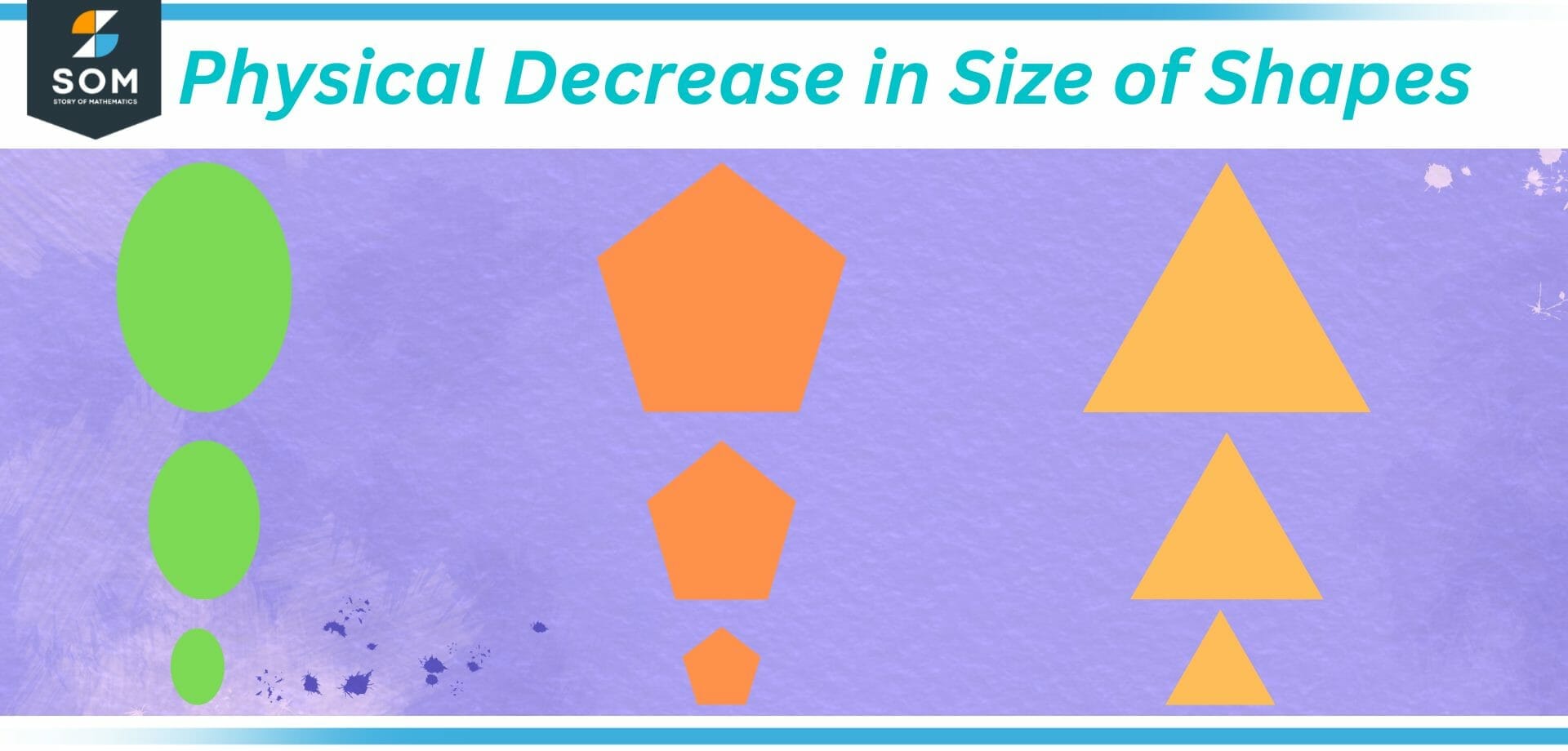JUMP TO TOPIC
Decrease|Definition & Meaning
Definition
Literally, decrease means to reduce or make smaller, e.g., drinking water from a cup will decrease the amount of water left in that cup. Similarly, driving a car will decrease the fuel in its fuel tank. The term is closely related to decrement and one can think of it as a subtraction operation, though it is not strictly used in that context (e.g., sorting in decreasing order).
The process of making something smaller in size or quantity is referred to as decreasing. It is one of the most fundamental ideas in mathematics, and it is also extremely important in a wide variety of real-world applications, ranging from business and economics to science and technology.

Figure 1 – Example of Deceasing water in glass
Decrease in Size
The term “decreasing in size” refers to the process of making an object smaller in terms of its physical dimensions. In mathematics, this may involve shortening the length of a line segment, decreasing the area of a rectangle, or decreasing the volume of a three-dimensional object.
The process of getting smaller can be expressed mathematically using ratios, fractions, and decimals as the different parts of the expression.

Figure 2 – Physical Decrease in Size of Shapes
For instance, if we were to reduce the length of a line segment by 50%, the new length of the line segment would be 5 units (10 times 0.5 equals 5). This would be the case if the line segment had originally been 10 units long.
In a similar fashion, if we start with a rectangle that is 10 units long and 5 units wide, cutting the length of the rectangle in half would give us a new rectangle that is 5 units long and 2.5 units wide (10 multiplied by 0.5 equals 5, 5 multiplied by 0.5 equals 2.5).
The reduction in size plays an essential part in the advancement of science and technology toward the creation of smaller and more power-efficient devices, such as smartphones and laptops. In day-to-day life, one can use decreasing in size as a tool to make more informed decisions, such as selecting smaller portions of food in order to maintain a healthy weight.
Decrease in Quantity
Bringing down the total number of items in a collection is what’s meant by the phrase “decreasing in quantity.” For instance, if we begin with 10 balls and lose 2 of them, we will now only have 8 balls, which is a reduction in a quantity equal to 20% of the original quantity.
The idea of a quantity decreasing over time is fundamental to the study of mathematics and has important real-world applications in a wide variety of fields, such as economics, inventory management, and environmental science.
Percentage Decrease
The term “percent decrease” refers to the proportional shift in the value that results from the reduction of that value over a given amount of time.
For instance, there has been a decrease in the amount of rainfall, as well as a decrease in the number of patients suffering from Covid. Utilizing the formula for percentage decrease, one is able to determine a percentage decrease.
Percent Decrease Formula
The percentage decrease formula calculates the amount by which the quantity has decreased in comparison to its starting value. Before we can calculate the percentage reduction, we need to first determine the difference between the two sets of values. After that, multiply that result by 100 after dividing the difference by the starting value.
The formula for calculating the percentage of a decrease can be written out as follows:
Percent Decrease = [(Old Value – New Value) / Old Value] x 100
The formula for calculating the percentage of a decrease can be broken down into two straightforward steps, and those steps are as follows:
Step 1: Calculate the difference between the two numbers, which is represented by the formula:
Decrease = Old Value – New Value
Step 2: Multiply the result of dividing the decrease by the old value and Multiply that by 100. This completes the formulation for the percentage drop:
[ (Old Value – New Value) / Old Value ] x 100
This gives you the percentage decrease.
Types of Decrease
Absolute Decrease
The Absolute decrease is the difference between the original value and the new value, regardless of the size of the original value. This difference is referred to as the actual difference between the two values. The fact that it is expressed in the same units as the initial value and provides a clear picture of the magnitude of the decrease are both characteristics of this expression.
The following is a representation of the formula for absolute decrease:
Absolute Decrease = Original Value – New Value
For instance, if a person begins with a total of one hundred dollars and spends twenty dollars, the absolute decrease in their wealth is twenty dollars (100 – 80).
The absolute decrease is a straightforward and easy-to-understand method of measuring changes in size or quantity. This method is utilised frequently in many facets of life, including the business world, the scientific community, and everyday life.
Proportional Decrease
A decrease that is proportional to the initial value is what is meant when we talk about a proportional decrease. To put it another way, the new value can be expressed as a constant fraction of the old value. Instead of being expressed as a percentage of the total value, this kind of reduction is shown as a ratio or a fraction of the starting point.
One possible representation of the formula for proportional decrease is as follows:
Proportional Decrease = New Value / Original Value
For instance, if a person starts out with a hundred dollars and wants to save twenty percent of what they earn each month, the amount of money they have saved will decrease proportionally by twenty percent, which is represented as a decimal.
When the size of the decrease is directly proportional to the size of the original value, a useful mathematical technique known as proportional decrease can be used. For instance, in the field of physics, the amount of force that an object experiences due to friction is directly proportional to its mass.
A proportional decrease is a useful tool that is commonly used in many areas of science, including physics, engineering, and mathematics. It is used for measuring changes in size or quantity that are directly proportional to the initial value.
Incremental Decrease
A decrease that takes place over the course of time in the form of small, incremental steps is referred to as an incremental decrease. Instead of being expressed as a single percentage or fraction of the initial value, this kind of reduction is more commonly shown as a series of changes over time.
For instance, if a person starts with a hundred dollars and saves ten dollars each month, their savings will gradually decrease by ten dollars each month because they are saving ten dollars less each month.

Figure 3 – Incremental decrease in savings
The use of incremental decrease is beneficial in circumstances in which the magnitude of the reduction takes place not all at once but rather gradually over the course of time.
For instance, in the world of finance, the amount of interest earned on a savings account may gradually decrease over the course of time due to fluctuations in interest rates.
An incremental decrease is a useful tool for measuring changes in size or quantity that occur gradually over time. It is commonly used in many areas of life, including finance, economics, and personal budgeting, to name a few of these areas.
Compound Decrease
A decrease that is said to be compounded is one that is based on the combined effects of several different factors or processes over the course of time. In other words, it is a decrease that happens as a consequence of a series of smaller decreases that occur over the course of time, each of which builds upon the previous one.
The following is a representation of the formula for compound decrease:
Compound Decrease = (1 – factor 1) * (1 – factor 2) * … * (1 – factor n)
For instance, if a person begins with a hundred dollars and saves ten dollars each month and their savings also decrease by five percent each year due to inflation, then that person’s savings will decrease in a compound manner, with both the savings and the inflation affecting the overall balance of their savings.
The compound decrease is useful in situations where the size of the decrease is affected by multiple factors or processes over time. One example of this is in the field of finance, where the balance of a savings account may be affected by both the amount saved and the interest earned, as well as by both inflation and taxes.
A compound decrease is a useful tool for measuring changes in size or quantity that are affected by multiple factors or processes over time. It is commonly used in many areas of life, including finance, economics, and personal budgeting.
Example of Decrease in Terms of Percentage
A student measures a length of 43 mm wrongly as 23 mm. Determine the percent decrease between the two by using the formula for the percent decrease. What is its significance?
Solution
The new value is \$25, and the old value was \$43. If we plug these numbers into the formula for calculating the percentage decrease, we get:
Percent Decrease = [(Old Value – New Value) / Old Value] x 100
= $\mathsf{\dfrac{43-25}{43}}$ × 100
= $\mathsf{\dfrac{18}{43}}$ × 100
= 41.9%
As a result, the percentage decrease in the number is close to 42 percent. In this case, the percent decrease depicts the measurement error of the student.
All images were created with GeoGebra.
